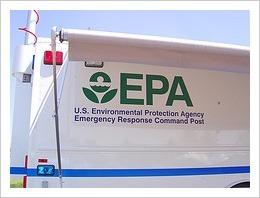 The principal investigator of this project is Sheila Kaplan. The EPA has a vast mandate - protecting air, water, land and people from pollutants. But year after year, through both Republican and Democratic administrations and Congresses, strong economies and weak ones, the institution fails the American public in many ways. The evidence abounds. Reports by the Government Accountability Office (formerly the General Accounting Office), EPA's own Inspectors General and the media have long documented EPA's inability to guard Americans from toxic chemicals, mining waste, leaking Superfund sites, greenhouse gas emissions, contaminated water, air pollution and other hazards. New problems also continue to appear, from the emergence of untested nanoparticles in consumer goods, to pollution from hydraulic fracking. Polls show that public trust in the EPA is down. In 2010, an advisory panel found that many agency staffers themselves believe that EPA has been hobbled by political pressure; has been forced to ignore relevant science, and is slow to act against known hazards, to avoid damaging industry. EPA has many dedicated employees who truly believe in its mission. So, why has the agency fallen short so often, since it opened its doors in 1970? A close examination of the agency shows that EPA has been corrupted by numerous routine practices, among them: the revolving door between EPA and industry; the large number of former lawmakers now lobbying to weaken environmental regulations or seek exemptions for clients; pressure from current lawmakers who are beholden to donors or who fear opposition in their next race, and other factors, including the "burrowing in" of political appointees, and the influence of the White House Office of Management and Budget.
The principal investigator of this project is Sheila Kaplan. The EPA has a vast mandate - protecting air, water, land and people from pollutants. But year after year, through both Republican and Democratic administrations and Congresses, strong economies and weak ones, the institution fails the American public in many ways. The evidence abounds. Reports by the Government Accountability Office (formerly the General Accounting Office), EPA's own Inspectors General and the media have long documented EPA's inability to guard Americans from toxic chemicals, mining waste, leaking Superfund sites, greenhouse gas emissions, contaminated water, air pollution and other hazards. New problems also continue to appear, from the emergence of untested nanoparticles in consumer goods, to pollution from hydraulic fracking. Polls show that public trust in the EPA is down. In 2010, an advisory panel found that many agency staffers themselves believe that EPA has been hobbled by political pressure; has been forced to ignore relevant science, and is slow to act against known hazards, to avoid damaging industry. EPA has many dedicated employees who truly believe in its mission. So, why has the agency fallen short so often, since it opened its doors in 1970? A close examination of the agency shows that EPA has been corrupted by numerous routine practices, among them: the revolving door between EPA and industry; the large number of former lawmakers now lobbying to weaken environmental regulations or seek exemptions for clients; pressure from current lawmakers who are beholden to donors or who fear opposition in their next race, and other factors, including the "burrowing in" of political appointees, and the influence of the White House Office of Management and Budget.
Lab Fellow Sheila Kaplan will write ethnography of EPA that will use case studies to document how its mission has been distorted and its staffers defanged by this economy of influence. She is also working to develop a way to measure political and corporate influence at EPA, which she hopes will serve as a model to measure corruption at other federal agencies and to promote transparency.
Attribution: http://www.flickr.com/photos/neoyogyrt/1011365197/
